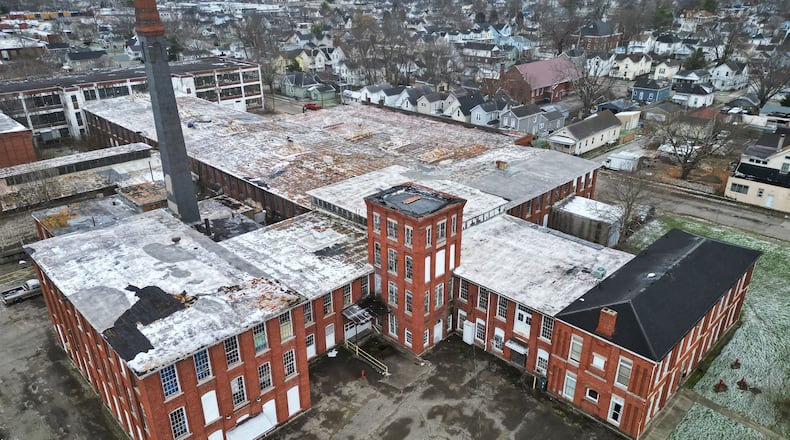“This announcement moves a very important project closer to reality — one that will add 100 housing units to help address our city’s housing shortage and spur revitalization in a key corridor,” said Bucheit, a Hamilton native who grew up in Lindenwald. “This kind of progress is a big deal for Hamilton, and it’s exciting to see this project move forward.”
This is the latest in a line of Hamilton projects that have successfully received millions of dollars in historic state tax credits from the state. Spooky Nook Sports Champion Mill, The Well House and, most recently this past summer, the Municipal Hotel project have all benefited from the program.
Cincinnati-based Bloomfield Schon has plans to invest $29.1 million to transform the building at the corner of Pleasant and Williams avenues ― less than two miles from downtown Hamilton ― into a 100-unit apartment complex with commercial space. Housing became a focus for Hamilton after Bucheit’s first State of the City address earlier this year. The city had seen an influx of apartments in the downtown and urban core areas of the city with developers renovating old buildings, like Third+Dayton, or constructing new apartments, like Rossville Flats.
The Shuler and Benninghofen Woolen Mill, which closed in 1967, was a textile mill that made wool goods like blankets and wool felt used in paper manufacturing. Since the mill closed, the building had primarily been used for warehouses, light manufacturing and retail but has been largely vacant in recent years.
Work on the building includes installing a new roof, tuck-pointing, and replacing missing or damaged masonry bricks.
This project is believed to enliven U.S. 127/Pleasant Avenue through Lindenwald. Bucheit said for this neighborhood, “this is extra special.”
“I’m so excited for all the residents, especially the members of (People Reaching Out To Others: Celebrate Our Lindenwald), (PROTOCOL chair) Frank Downie, and everyone who has worked so hard over the years to champion this neighborhood,” Bucheit said. “Waking up to a dusting of snow this morning and hearing this news today—it must feel like Christmas has come early.”
The State Historic Preservation Tax Credit Program provides up to 25% of qualified rehabilitation expenditures incurred during a rehabilitation project. Hamilton has seen success in projects receiving historic tax credits from the state of Ohio, including $1.6 million for the $16 million The Well House Hotel project and $6 million for the $61.6 million hotel project which will redevelop the former Hamilton city building.
Ohio Rep. Sara Carruthers, a Republican from Hamilton, helped secure $1 million in state capital funds for the Shuler and Benninghofen project.
This round of historic tax credits for preservation projects had 37 projects, and in addition to the Shuler and Benninghofen project, there were more in Butler County.
The former Hamilton YWCA building, a three-story masonry structure in the city’s German Village Historic District, has been vacant since the YWCA moved out two years ago after building a new facility on Grand Boulevard. Cincinnati-based developer Lauck Properties purchased the former YWCA building earlier this year and received $540,000 for a $5.46 million redevelopment project.
Brad Lauck, owner of the development firm, told the Journal-News he plans to create between 36 and 42 apartment units.
Credit: Nick Graham
Credit: Nick Graham
Many of the historic features of the 1930s built structure have been retained, like the original patterned brickwork and ornate stone carvings on the exterior and flooring, stairs, doors, wainscoting, trim and a fireplace on the interior. Most of the windows are original, with some featuring stained glass accent panels.
In Middletown, the Middletown Building and Deposit Association has a $12.25 million project at 11 S. Main St. and received $2 million in state tax credits.
The project will rehabilitate a prominent, vacant high-rise building in downtown Middletown built in 1930. The Art Deco building is one of the city’s more significant landmarks. The former bank building will be rehabilitated into 21 market-rate apartments on the upper floors with office space on the first floor.
Many of the historical architectural features will remain in the banking hall on the first floor, and distinctive exterior features, including ornamental metalwork, lighting, and stonework, will be repaired and retained.
“By preserving our historic buildings, we’re retaining the unique identity of Ohio’s communities,” said Ohio Gov. Mike DeWine. “Through the tax credit program, we’re ensuring that future generations can experience the character and stories that shaped our state in the spaces where they happened.”
About the Author


